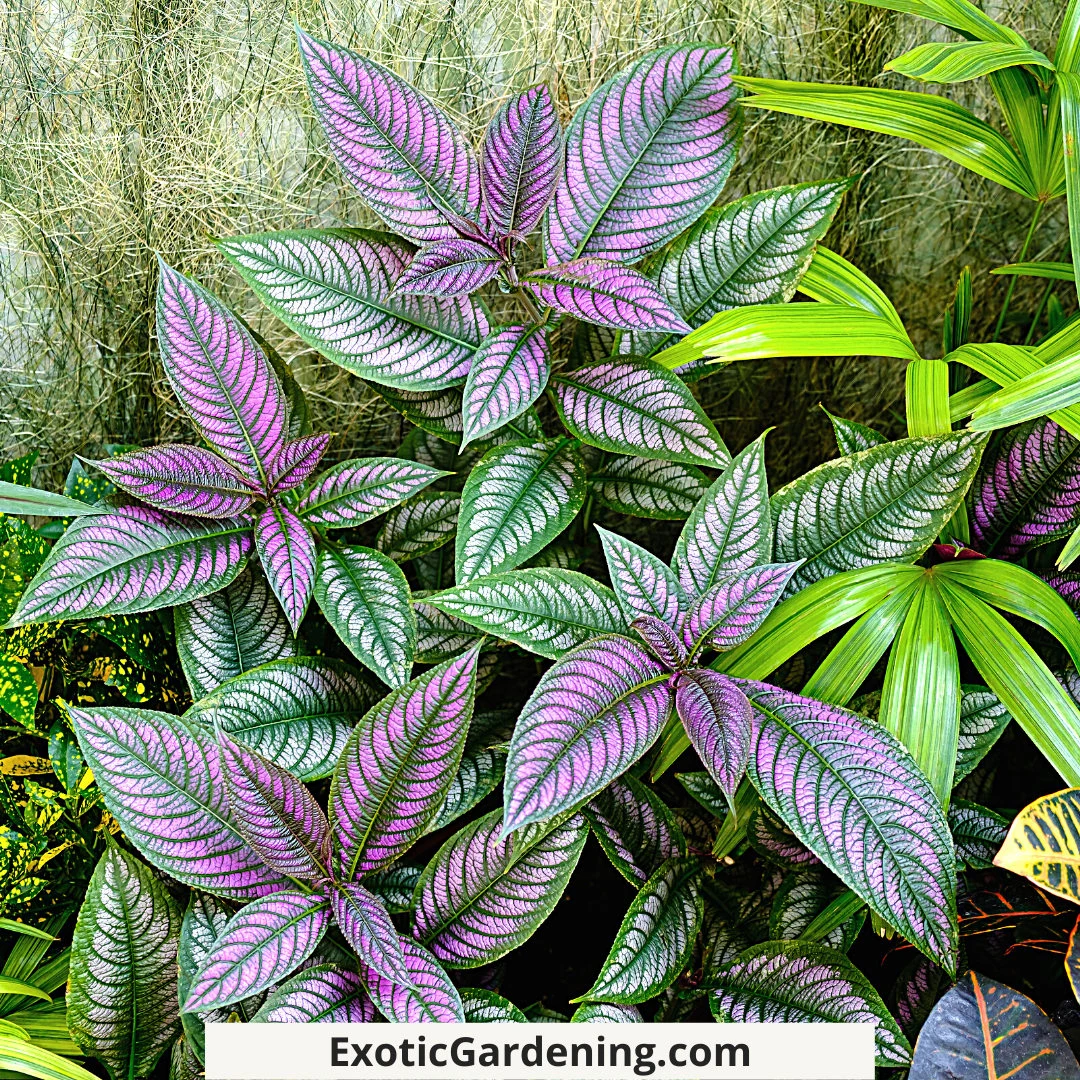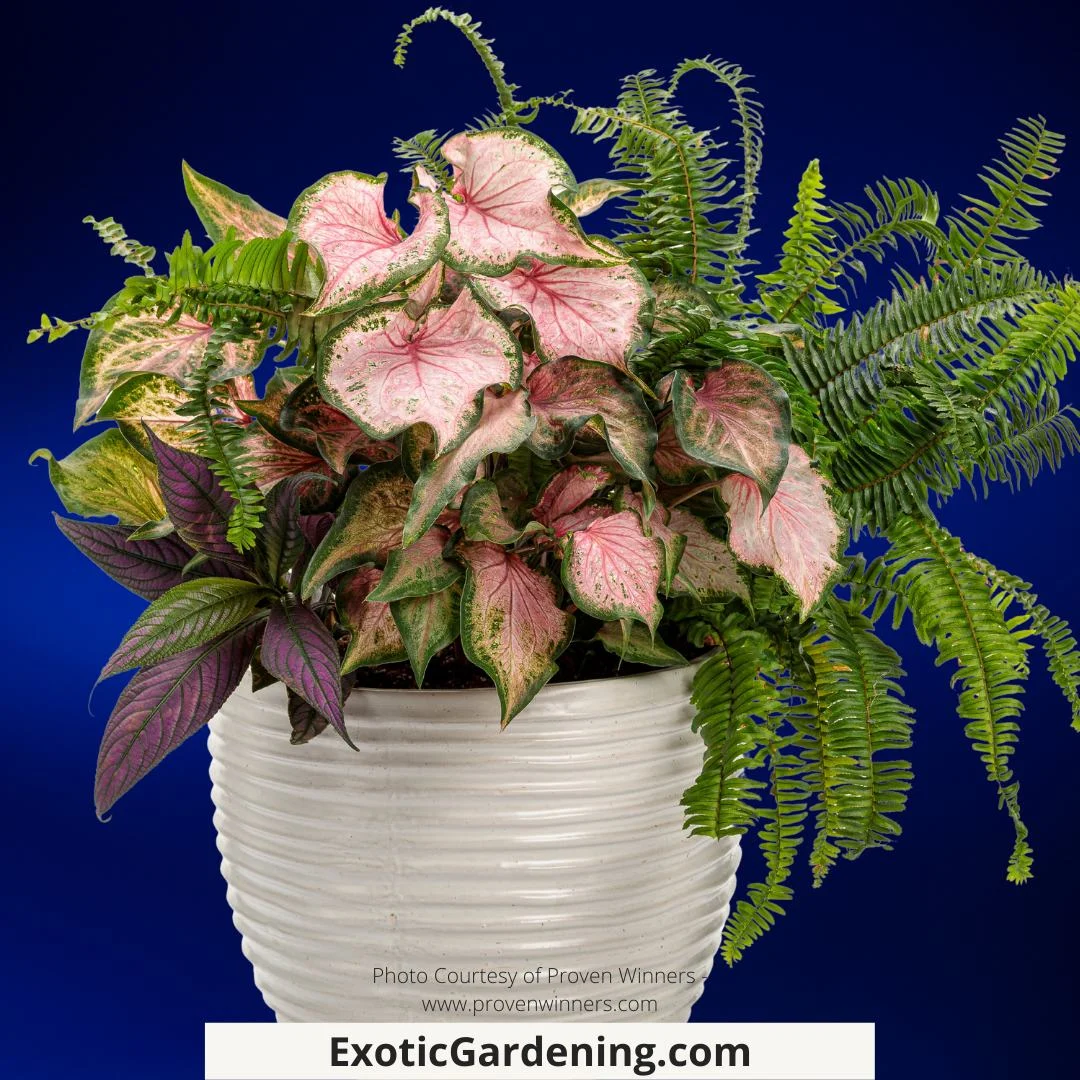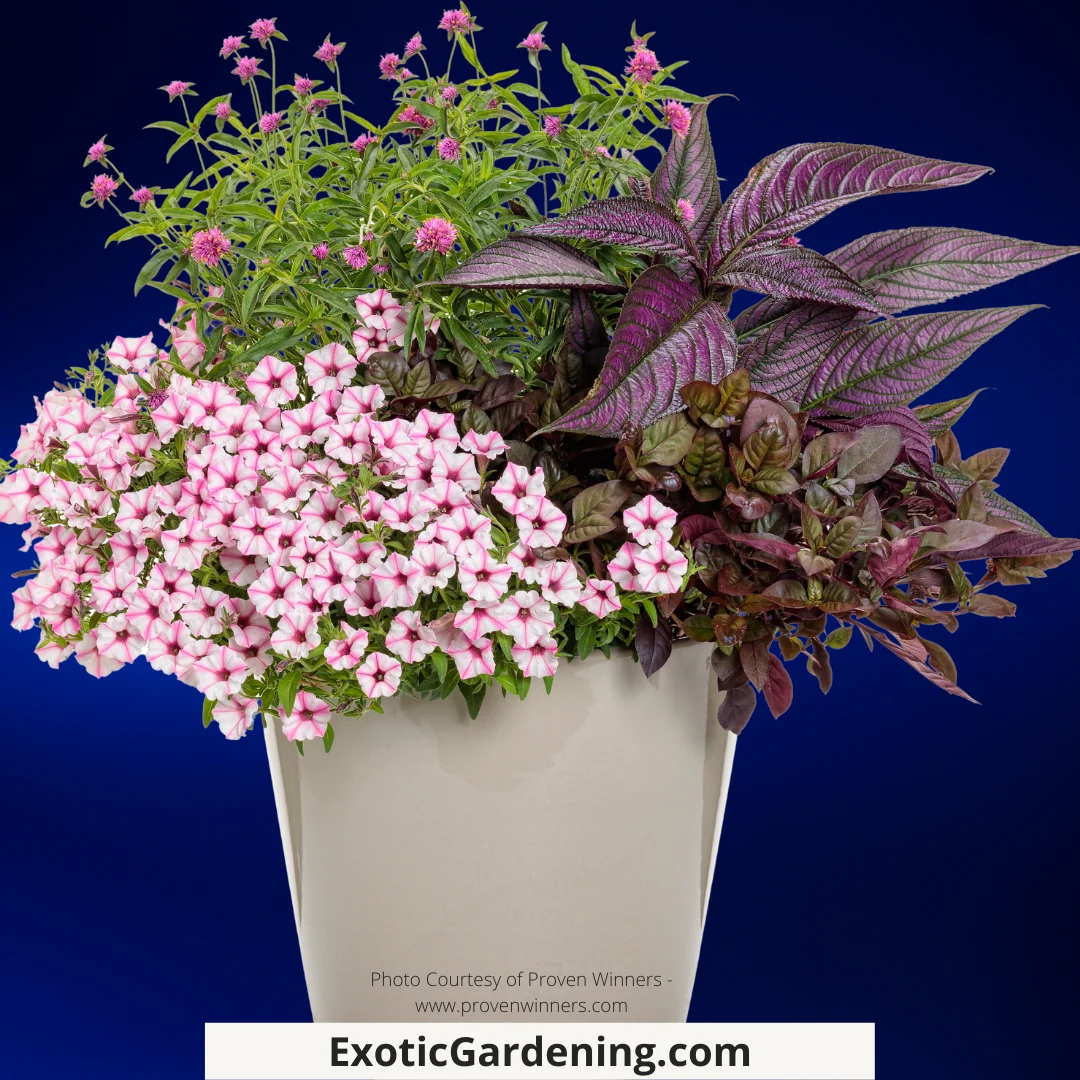The Persian Shield Plant is quickly catching everyone's eye this spring with its beautiful, exotic looking narrow, lance-shaped quilted leaves.
The marbled rich purple leaves have iridescent blue markings with a deep wine red underside.
The Persian Shield plant was a favorite in Victorian times and appears to be well on its way to becoming a favorite today.
Below I share my tips on how to successfully grow and care for this amazing plant.

Flowering And Pruning The Persian Shield Plant
The Persian Shield plant has beautiful blue flowers, but they should be removed, because they weaken the plant.
Persian Shield Plants need pruning often to keep them in shape and so they don’t become leggy.
The Persian Shield plant can grow up to three feet with pinching, and a double pinch is recommended, and up to five feet without and will stand on their own without staking.

Persian Shield Plant Growing Preferences
I have found that under hanging baskets, and climbing vines in my greenhouse is a perfect spot for them, as it receives partial shade during the hottest part of the day, but also receives enough sunlight to keep its varied colors.
I have a raised bed with other tropicals in it, and so the plant can grow into the ground and have plenty of water.
A good group of companion plants could include Ferns, Caladiums, Lambs Ears, Silver Plectranthus, and Impatients.
Another great idea is to grow them among red or purple flowers or foliage that will enhance the colors of the Persian Shield.
This plant can be grown outdoors in the garden during the warmer months, but don’t let it get too cold.
Another plus to this plant is that deer and rabbit don’t seem to favor it.

Water And Humidity Requirements For The Persian Shield Plant
This plant likes to be watered well, allowed to dry slightly, especially during its resting period.
It should be planted in well draining soil for the best results.
However, it does not like dry air, and a humidifier is recommended if this is to be a house plant.
Once the leaves detect dry air, they will dry up and fall off.

Fertilization Requirements For The Persian Shield Plant
This plant should be fertilized either with nitrogen or a well-balanced fertilizer.
This will help the plant to keep its bright colored foliage.

Light Requirements For The Persian Shield Plant
If you intend to grow this plant indoors, you may want to consider giving it some type of artificial lighting to encourage it to branch.
Outdoors you may grow it in full sun, but be sure it has frequent waterings or some type of automatic irrigation system so that it doesn’t wilt.
Although the Persian Shield plant is easy to propogate, it can be rather tricky to grow unless you can provide it with its growing requirements, mainly high humidy and temperatures that are neither too warm or too cold.
It is a plant that is well worth the effort for the beauty of the leaves, and it definitely draws the eye to it. It is a real treat from bland green leaves, and can be used in the garden in place of such common plants as Dusty Miller and Artemisia.
Tropical Fruit And Foliage Plants
Tropical Plants For Medium To High Light
Check out these awesome tropcial plants for medium to high light that make wonderful, easy to care for houseplants.
Caring for Indoor Palm Plants: Tips for Thriving Green Beauties
Discover expert tips for caring for indoor palm plants, ensuring their vitality and adding a touch of tropical elegance to your space.
How To Grow Cinnamon
Learn how to grow cinnamon from seed or cuttings. Cinnamon trees do well as houseplants even though they can get rather large.
How To Grow And Harvest Pineapple From Home
Learning how to grow and harvest pineapple is a fun project that anyone in any climate can experience as long as they are patient.
Colorful Foliage Plants
Try these colorful foliage plants in your garden this summer and then bring them indoors during the winter to brighten up your home decor.
Easy Exotic Houseplants: Tropicals That Thrive Indoors in Containers
Tropical plants are the most beautiful, easy to grow indoor houseplants. Start growing exotic houseplants today that fruit and flower!
Eucalyptus Growing Indoors: Tips and Troubleshooting Guide
Discover the art of eucalyptus growing indoors for year-round beauty and fragrant cut foliage in your flower arrangements.
My Theobroma cacao Story
I've had a love affair with growing chocolate for over twenty years, so I wanted to share my Theobroma cacao story with all of you.
Scented Grass Adds Natural Fragrance To The Home Or Garden
Scented grass is one way to add scent to your garden or even your home. Best of all, they look pretty, smell great and have practical uses.
Learning About Bananas
Once you start learning about bananas you may find this popular and important fruit is really quite fascinating and makes a great houseplant.
The Enigmatic Elegance: A Comprehensive Guide to Philodendron Florida Ghost Care
Elevate your indoor gardening with our guide to Philodendron Florida Ghost care, propagation, and maintenance tips.
Incorporating Bold And Exotic Plants Into Your Landscape
Discover the allure of bold and exotic plants for your garden in this comprehensive guide. Transform your landscape today!
Variegated And Other Interesting Plants: Elevate Your Space with Nature's Painted Wonders
Explore the world of variegated and unique plants, adding vibrant beauty and intrigue to your indoor oasis.
How To Grow Tropical Plants
Growing tropical plants - also known as houseplants - indoors is fun and enjoyable plus many of them clean the indoor of pollutants.
It is easy to grow exotic looking plants that produce tropical fruit and colorful flowers in a pot in your living room or office.
Many of these plants are easy to start from seed and I share with you five plants that I recommend for indoor growing.
I also share with you why growing your own tropical fruit saves money.
In this video you will learn:
How to bring tropical plants indoors at the end of summer
How to grow tropical plants indoors
How to protect and overwinter tropical plants outdoors in cold climates
How to propagate tropical plants
How to water tropcial plants
How to grow topical plants in a greenhouse
















Redding Tree Service
Monday 25th of October 2021
The marbled rich purple leaves have iridescent blue markings with a deep wine red underside.